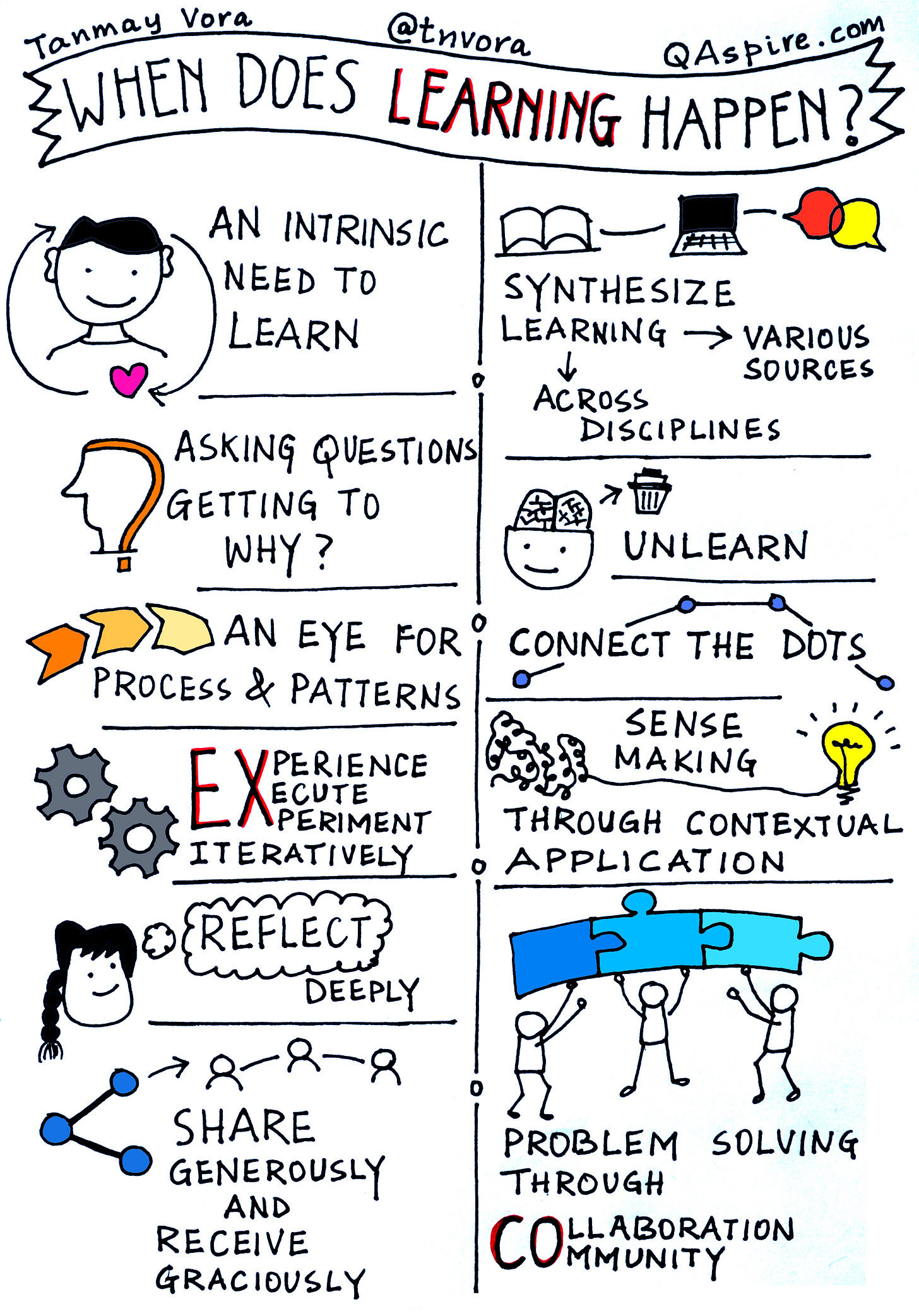How Our Brain Learns
Let's explore when "real" learning happens, and what science says about how our brain learns best.
Welcome!
In this edition of Clarity Canvas, we explore how our brain learns best - and why mastering the art of learning is more important than ever in a world increasingly shaped by artificial intelligence.
But before we go further, I wanted to share a couple of updates:
New website announcement: My old website QAspire.com and all the blog posts/sketchnotes have now moved to my personal domain tanmayvora.com. I hope you will pay a visit and share your feedback for improvement.
Visual Thinking and Sketchnote Workshop: Each month, we host an immersive workshop on visual thinking and sketchnotes as a way to communicate, collaborate and solve problems. This month’s workshop is happening on 25-Apr-2025. Do check out and register.
Support my work by considering a paid subscription.
Learning in the Age of AI
Artificial Intelligence has come a long way from being a subject in my computer applications class in early 2000 to being applied ubiquitously across all fields and domains. A distant possibility back then, a reality now.
It is fascinating how AI is reshaping the world of work and what it means to be human at work. The paradox of our times is this: the faster the world changes, the more essential human learning becomes. Not the kind of explicit learning that comes from reading AI generated content, but the implicit learning that happens as a result of noticing, observing, analyzing, collaborating, doing the work and reflecting.
In a new landscape, learning comes to those who are most adaptable, most curious and most intentional about bringing ideas to life through relentless cycles of execution and reflection.
That's why understanding how we learn is no longer optional. It is foundational.
My Journey of Learning Sketchnotes
In 2015, after blogging for almost 9 years and having written two books, I was looking for better ways to express my insights and learning. I stumbled upon work of
and on visual note taking and I immediately gave it a shot.I gathered courage to share my first black and white sketchnote on Twitter and a few people liked it. I created the next few ones using better pens and some colors. People liked them even more, so I invested in a bunch of fine liner pens and better quality of paper I drew on. Before I realized, I was on a journey. Each time I created a sketchnote, I wanted it to be better than the earlier one. I focused on creating visual notes only for ideas that deeply resonated with me as a learner.
And the journey took off when my work found virality on Twitter. I never knew that something I started as a tiny experiment would grow into a body of work that the world associates with me.
I learned that real learning happens:
When you are intentional about learning
When you are driven by an intrinsic need to advance and not only by external triggers and rewards.
When you ask more questions to get to the WHY of things (and then to what and how)
When you carry an open frame of mind that is receptive
When you look for process and patterns even in discrete situations
And when you use your understanding to connect the dots and look at a larger picture
When you enjoy the process of learning without getting too anxious about the results and goals.
When you are self-aware (of your own beliefs, thoughts, values and perceptions)
When you experience, execute, iterate and test your hypothesis
When you reflect deeply on your experiences
And when you share your lessons (and process) with others generously so that they can learn (and also contribute)
When you surround yourself with passionate learners, mentors and coaches (and be a part of a learning community)
And engage others (community) meaningfully in collaborative problem solving
When you are able to collect, synthesize and process information from varied sources
When you solve interesting problems
And be able to create a map on the go (rather than relying on tried and tested methods)
When you overcome the fear of making mistakes
When you think critically
When you execute in short bursts, fail small and realign your approaches
When you Unlearn (let go of the old ways of thinking and doing)
When you apply lessons in line with unique needs of the context
When you synthesize your lessons and apply meta-lessons in across disciplines
When you are generous enough to share what you know, teach, coach and mentor others
When you are comfortable with inherently ambiguous nature of learning (and ability to hold two contrasting thoughts without being judgmental)
When you are comfortable also with the emergent nature of learning
When you don’t allow your learning to crystallize but keep it fluid and evolving.
When you truly start believing that self-directed and self-initiated learning is the best way to learn (for a lifetime).
Understanding How Our Brain Learns
How do we create conditions for our brain to learn more effectively. Apparently, there is a lot of science behind it, which I find very relevant and fascinating.
In a podcast titled “The diary of a CEO”, Dr. Wendy Suzuki, a neuroscientist and author, outlined four key ingredients that our brains need to truly learn and remember:
Keep reading with a 7-day free trial
Subscribe to Clarity Canvas Newsletter by Tanmay Vora to keep reading this post and get 7 days of free access to the full post archives.


